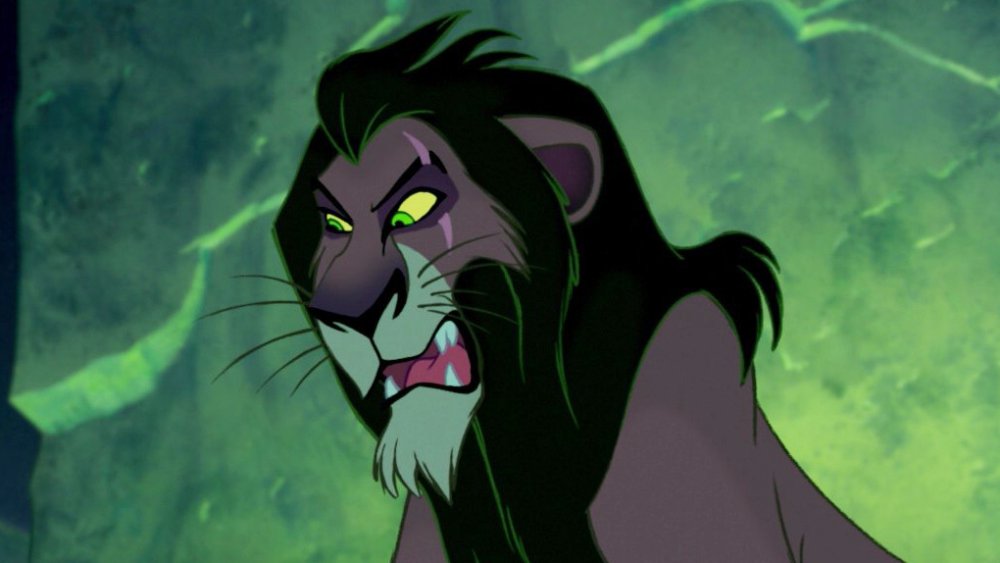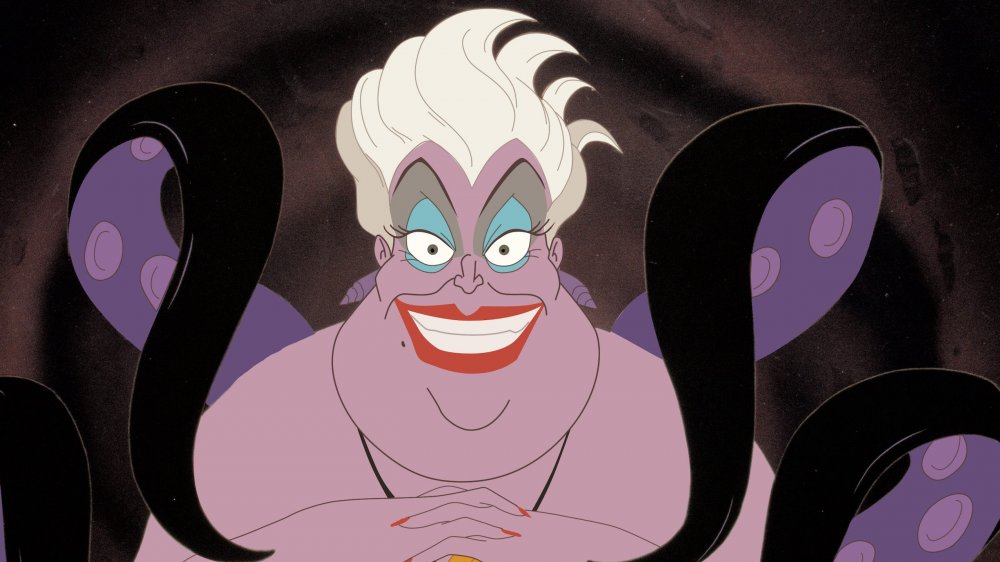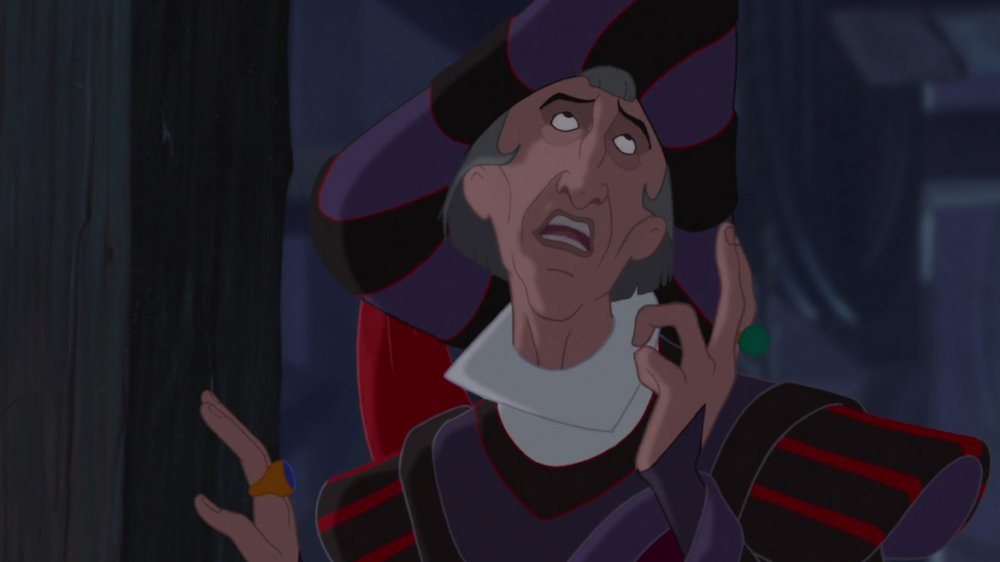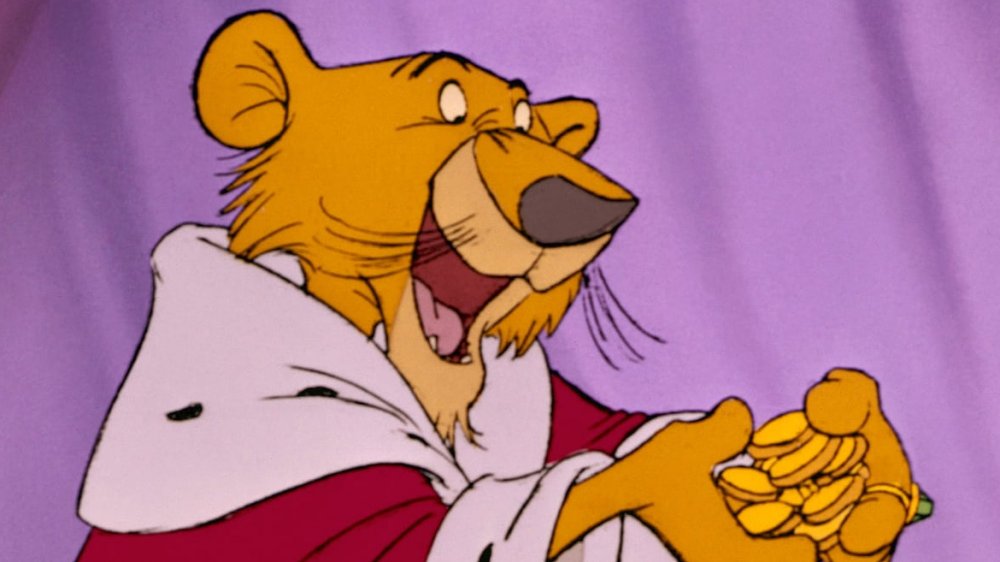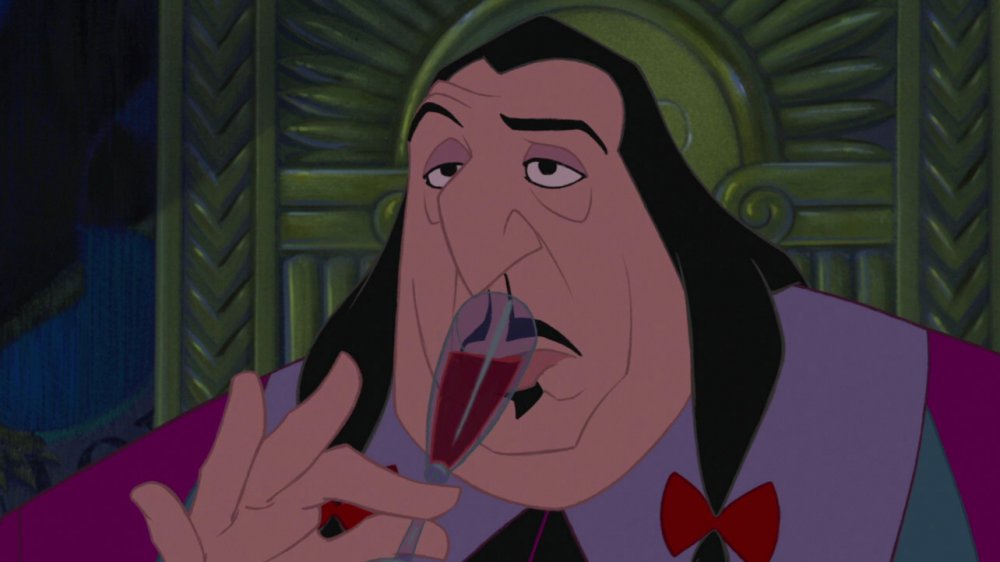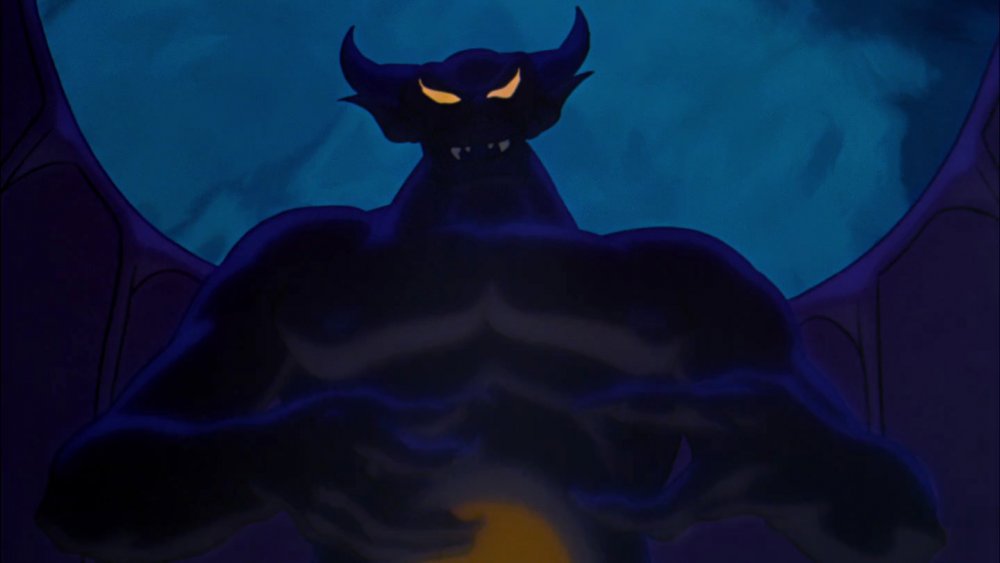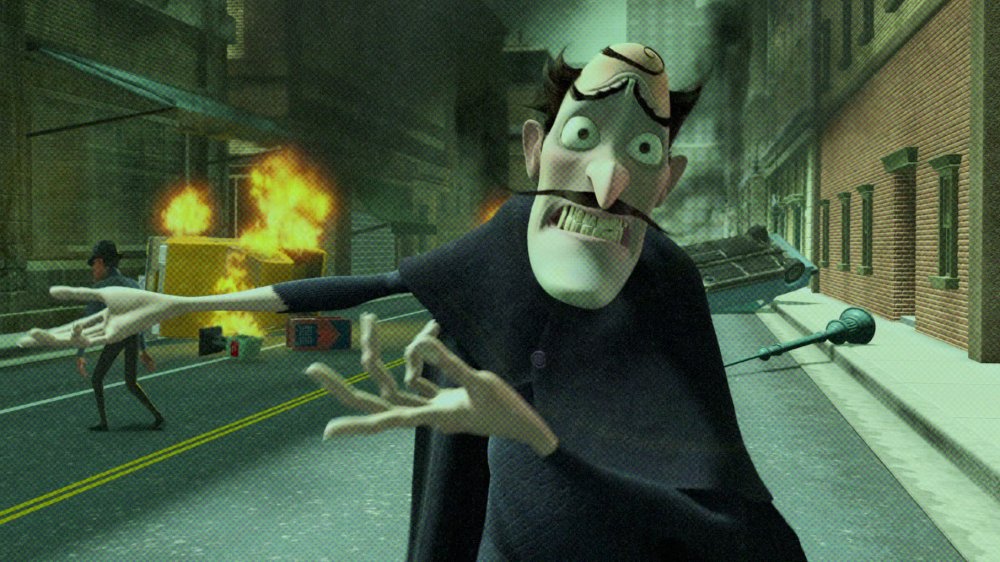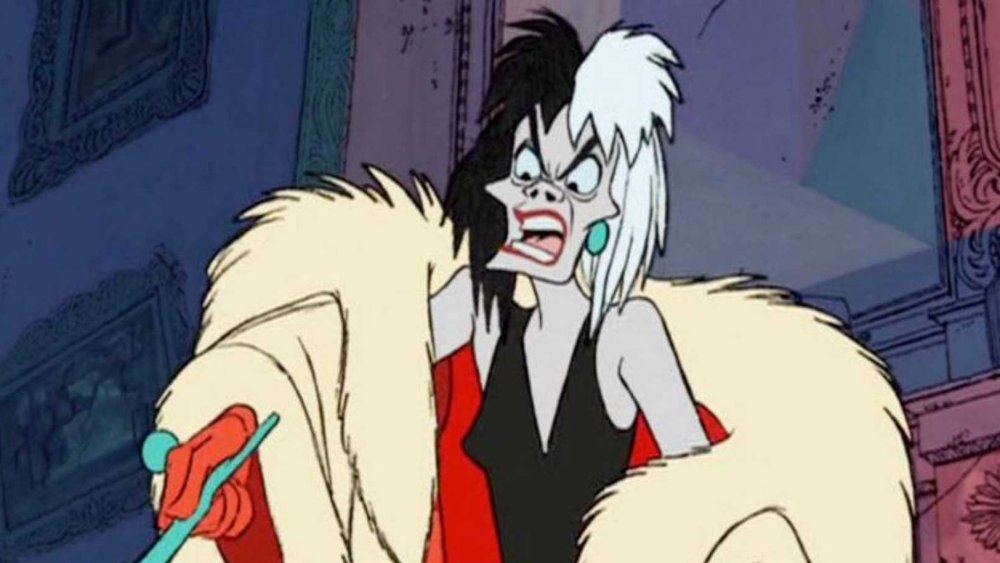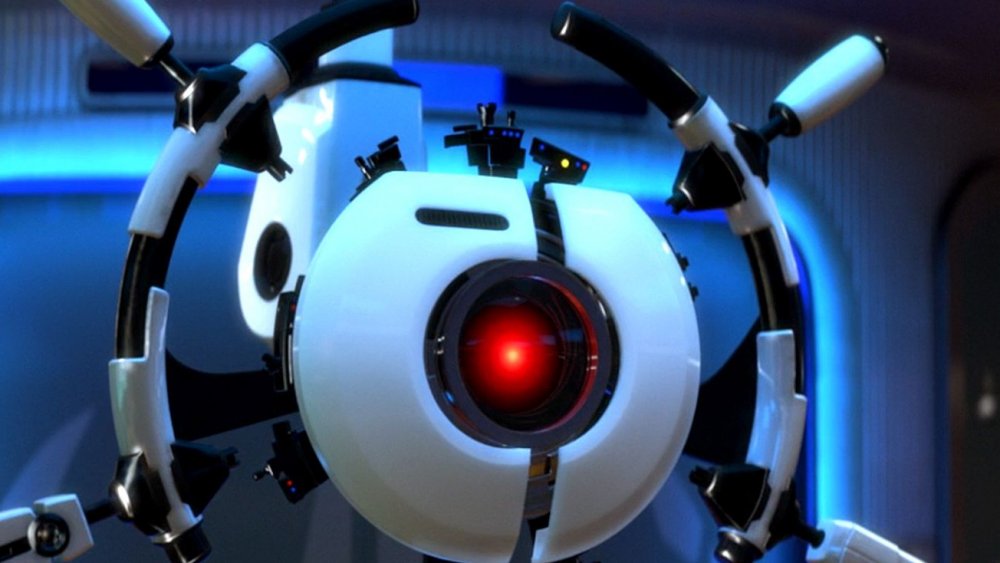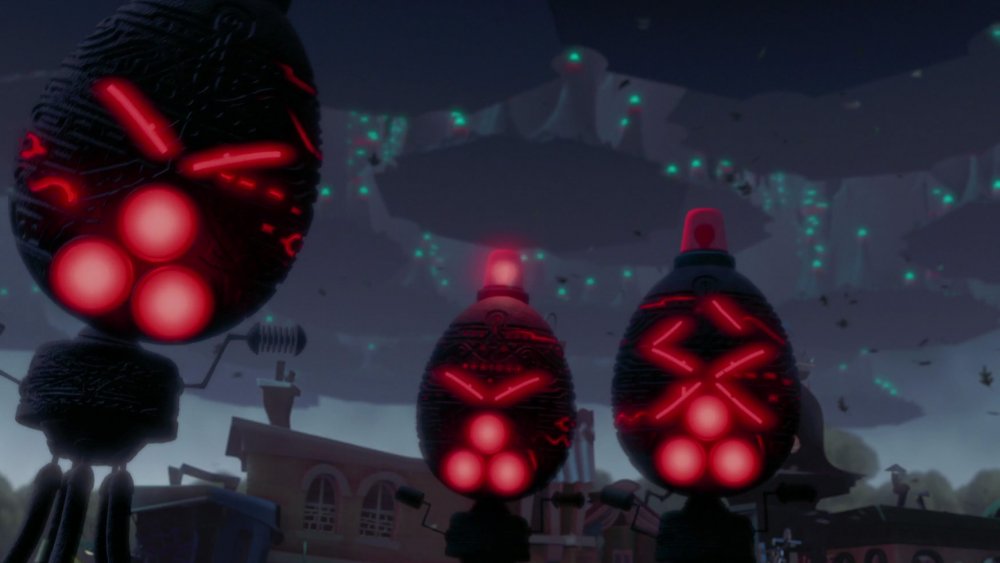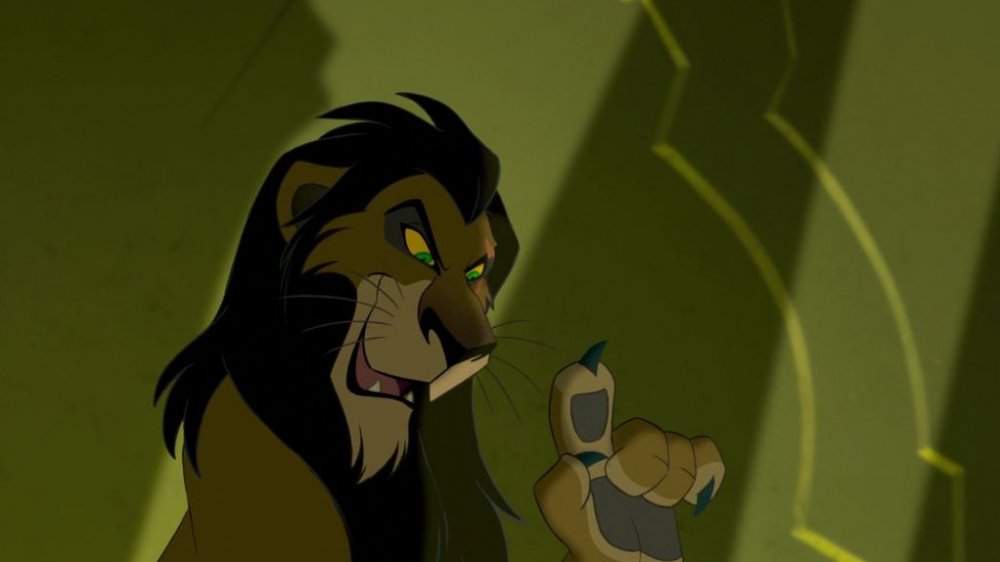Things Only Adults Notice About Disney Villains
Part of the reason that animated Disney movies continue to have such pop cultural lasting power is that they appeal to all ages. True, these films are made for kids first and foremost. However, the best of these productions feature animation and storytelling that have a universal appeal. That was extremely important to Walt Disney himself. As noted by The Telegraph, Walt Disney once said, "You're dead if you aim only for kids. Adults are only kids grown up, anyway."
Given this approach, it should be no surprise that many Disney villains have qualities that only adult viewers will be able to perceive. Such details appear in a wide range of forms. Sometimes these figures are based on classic movie stars that no child in 2020 would be able to know. Other times, these villains are motivated by mature subject matters that'll go entirely over the head of adolescent audience members. However these qualities manifest, Disney villains have a tendency of being characters that adults can appreciate on a whole different level.
Ursula is a Disney villain based on a drag queen
It's not hard to remember Ursula (Pat Carroll), the big bad of The Little Mermaid. With her particularly malicious plots and eel henchmen Flotsam and Jetsam, not to mention the memorable musical number "Poor Unfortunate Souls," Ursula has easily become one of the most distinct members of the Disney villain canon. However, something else that sets Ursula apart from the likes of Captain Hook is her real-life inspiration, which is something that only adults will be able to appreciate. Ursula had her design based on the famous drag queen and actor Divine.
How did the star of raunchy John Waters movies like Pink Flamingos and Multiple Maniacs come to inspire the villain of a G-rated Disney musical? According to Hazlitt, animator Rob Minkoff drew up a design of Ursula that ended up bearing a strong resemblance to Divine. Little Mermaid composer Howard Ashman, a major fan of both Waters and Divine, strongly endorsed this design choice. According to Insider, animators Kevin Lima and Glen Keane took further visual influence from Divine by giving Ursula a white hairstyle similar to the one donned by the drag queen in Pink Flamingos. The connection between the two only grew as Ashman committed to channeling Divine's uber-confident persona into Ursula's performance during "Poor Unfortunate Souls."
Viewers of all ages can appreciate the character of Ursula and her enjoyably scenery-chewing nature. But only adults will truly understand how one legendary performance ended up influencing a legendary character.
Frollo's motivation in The Hunchback of Notre Dame is something only adults will get
The Hunchback of Notre Dame broke down many barriers for animated Disney fare. For one thing, this 1996 adaptation of Victor Hugo's novel explicitly tackled religion, which no other film in the studios' canon has done. For another, there's the motivation of its antagonist, Claude Frollo (Tony Jay). Frollo is a studious justice minister who frowns upon anything sexual in nature. However, the character of Esmeralda, a person Frollo publicly refers to as "disgusting filth," stirs up feelings of erotic passion inside of Frollo. His internal conflict over these forbidden emotions becomes so great that his villain musical number, "Hellfire," is fixated on him begging for forgiveness from God for feeling such intense lust.
Whereas other Disney villains are motivated by greed or revenge, Frollo is having a crisis dictated entirely by his sexuality. This is unexpectedly bold storytelling territory from Disney, a studio that spent the 1990s releasing kiddie fare like Meet the Deedles. Indeed, upon its initial release, the Los Angeles Times reported letters from parents questioning if dark material in Hunchback like Frollo's internal conflict were too mature for a kid's movie. However, by daring to give its villain such a mature motivation, The Hunchback of Notre Dame was able to reinforce itself as a far more mature take on an animated Disney musical.
Prince John from Robin Hood is based on an actual king
Over the years, everyone from Claude Rains to Oscar Isaac has portrayed Prince John in various Robin Hood productions. When it was time for Disney to do its animated take on Robin Hood, it was inevitable they'd do their own unique version of the character. And in this 1973 animated classic, John was portrayed as a cowardly thumb-sucking lion, voiced by two-time Academy Award winner Peter Ustinov.
With Prince John now portrayed as a cartoon lion who calls out for his mommy in times of distress, it can be easy to forget that Prince John is an actual person. Long before Disney's 1973 film Robin Hood, King John ruled over England for 17 years between 1199 and 1216. According to Ancient History Encyclopedia, there's little historical evidence connecting John and Robin Hood in the real world, but the frequently antagonistic depiction of John in pop culture stems from how the guy was "one of the very worst kings ever to sit on the English throne."
After losing critical lands in France and sending England into financial ruin, John has cultivated a toxic reputation that's ensured he's mostly remembered as a cartoony villain to Robin Hood. While children will appreciate Disney's take on Prince John as a particularly silly entry in the pantheon of Disney villains, adults will understand how the characters portrayal in Robin Hood reflects the toxic legacy of a real-life king.
John Ratcliffe from Pocahontas is a real person
Unlike most animated Disney movies, Pocahontas is actually based on a true story. However, its deviations from reality have inspired a large amount of criticism over the years, including the lack of evidence for there having been a romantic relationship between John Smith and Pocahontas. Further deviations from history can be found in the character of John Ratcliffe (David Ogden Stiers).
The principal villain of Pocahontas, Ratcliffe is depicted as a gold-hungry captain who puts his own selfish interests above all else, including the safety of Native Americans. With his love of money, power, and flamboyant fashion, Ratcliffe fits nicely into the effeminate and greedy traits that define so many Disney villains (e.g., aristocratic baddies like Jafar, Captain Hook, and Professor Ratigan). However, there is a quality that sets the character apart from the majority of Disney antagonists. Unlike many other Disney villains, Ratcliffe is actually based on a real person. Per Britannica, Ratcliffe was an early settler to America and eventually became the second president of the Jamestown colony. Whereas Pocahontas depicts Ratcliffe being tied up and taken back to England to pay for his crimes, the actual Ratcliffe was killed by Powhatan Indians.
Pocahontas is a film more interested in using the details of America's settlement as a springboard for its own story rather than adhering to the facts of this era. So if you're looking for historical accuracy when it comes to learning about John Ratcliffe, you probably shouldn't take any notes when this Disney villain steps onto the screen.
This Disney villain is based on an actual deity
One of the most striking segments in the 1940 film Fantasia is entitled "Night on Bald Mountain." Set to the piece of music of the same name (originally composed by Modest Mussorgsky and rearranged by Leopold Stokowski), the short sees a gigantic monstrous being awakening an assortment of spirits. Eventually, the spirits and the beast are held at bay at the sound of peeling bells and a chorus of monks singing "Ava Maria."
Though never given a name in Fantasia itself, the beast at the center of "Night on Bald Mountain" is named Chernobog. Adult viewers well-versed in ancient mythology will recognize Chernobog's name as one derived from the world of Slavic myths. According to Godchecker, Chernobog's name means "black god," and he's also known as "the lord of evil," a creature whose deeds were too wicked to put into classic mythology. Interestingly, another ancient being also seems to have played a part in inspiring Chernobog. In Fantasia, host Deems Taylor refers to Chernobog as "Satan." Though the character is officially named Chernobog, design similarities between Fantasia's Chernobog and the traditional depiction of Satan are apparent, particularly in their horned heads.
However, "Night on Bald Mountain" turned out to be a distinctive enough endeavor to ensure that Chernobog could stand on his own two demonic feet, and adult viewers can appreciate how Chernobog's past extends long before Fantasia hit movie theater screens.
Meet the Robinsons' Bowler Hat Guy is voiced by the film's director
Modern animated films are riddled with celebrity voice-overs. Many of these are celebrities even the youngest of audience members will recognize. Robin Williams is so ubiquitous in live-action family fare, for instance, that kids doubtlessly knew who was voicing the Genie in Aladdin. Ditto for Dwayne Johnson as Maui in Moana.
The 2007 animated Disney film Meet the Robinsons is no exception when it comes to celebrity voice-casting. However, one of the film's most notable characters is voiced by a far less recognizable individual. That would be Meet the Robinsons' antagonist, Bowler Hat Guy, who's voiced by Stephen J. Anderson. While the name will be unfamiliar to kiddos, adults watching the credits of Meet the Robinsons will be able to discover that Anderson is also the writer and director.
How did Anderson score such a high-profile voiceover gig? "We do temporary voices for the characters very early on when we're creating this movie on storyboards," Anderson explained to Animated Views, adding that, "And there are times when those voices have been around so long enough that they tend to stick to those characters, and they're defining those characters more so then than a cast that would be done later. That kind of happened with me and Bowler Hat Guy."
A classic Hollywood actress inspired Cruella de Vil
Some Disney villains yearn for world domination. Others are motivated by some sort of prophecy dictated by a magic mirror. Cruella de Vil is one Disney villain who keeps her aims much simpler. All she wants is to take 99 Dalmatian puppies and turn them into a fur coat. Sure, this puppy-fixated antagonist doesn't have a motivation ripped straight out of everyday reality. However, the Disney version of the character (who originated in Dodie Smith's 1956 novel The Hundred and One Dalmatians) did take cues from reality through real-life actress Tallulah Bankhead.
In a 1985 piece for the Los Angeles Times, animator Marc Davis noted that Tallulah Bankhead, an actress known for playing intimidating women, was one of his key inspirations for designing Cruella de Vil. Bankhead's influence didn't stop there, though. In the same Los Angeles Times piece, Cruella's voice actor, Betty Lou Gerson, reflected that, "In the first recording session, they told me to see what I could come up with. The first voice I tried sounded a bit like Tallulah Bankhead. Everybody said, 'That's it, don't change it!'"
Clearly, Disney's iconic take on the character of Cruella de Vil owes a massive tip of the hat to Bankhead. While the actress' influence here is indisputable, Cruella has managed to take on a life of her own. In 2020, kids who watch 101 Dalmatians can still be intimidated by this character even if they have no idea who Tallulah Bankhead is.
AUTO from WALL-E is an homage to an iconic villain
WALL-E wears its homages to classic cinema on its sleeve. Just look at how WALL-E's loneliness is reflected in his obsession over a VHS tape of Hello, Dolly! Another example of WALL-E's homages is how this sci-fi flick tips its hat to another iconic entry in the genre through the design of the villainous character AUTO.
AUTO may be designed to look like a steering wheel, but the robot's gigantic, glowing red circle makes it apparent that AUTO is supposed to evoke HAL-9000, the villainous computer from 2001: A Space Odyssey. The two carry similar designs, as well as a determination to put their own agendas over their human superiors. AUTO's connection to 2001 becomes even more explicit in the climactic showdown between the Captain (Jeff Garlin) and AUTO, which employs the Richard Strauss composition "Also sprach Zarathustra." That Strauss piece was used to immensely memorable effect in 2001: A Space Odyssey.
AUTO does, however, interestingly depart from HAL in terms of their voice. Whereas HAL was voiced by Douglas Rain and meant to carry a more human quality than any of the flesh-and-blood characters, AUTO is voiced by MacInTalk, Apple's text-to-voice software. This gives AUTO the most lifeless voice in all of WALL-E's cast. Giving AUTO unique qualities compared to HAL ensures that this WALL-E villain can work as a standalone entity for younger viewers, and in the process, AUTO becomes more than just a homage to 2001.
The Chicken Little aliens take visual cues from H.G. Wells
The alien antagonists of 2005's Chicken Little are fluffy teardrop-shaped critters who look tailor-made to be turned into stuffed animals you could find on any rack at the Disney Store. However, these aliens don't reveal their true forms until Chicken Little's ending. Up until that point, these otherworldly visitors lurk inside large robots that move around on long mechanical legs. Older viewers will be able to take one look at these machines and realize that these beings are taking visual cues from War of the Worlds.
In Wells' seminal work The War of the Worlds, the alien invaders move around in objects known as tripods. In the original book, Wells describes the tripods as "higher than many houses, striding over the young pine trees ... a walking engine of glittering metal, striding now across the heather; articulate ropes of steel dangling from it." The same description matches Chicken Littles' own mechanical aliens. This homage proved timely for Chicken Little given that Steven Spielberg's War of the Worlds also debuted in 2005, putting the tripods back in the publics' consciousness.
At the time of its initial release, adult viewers, such as Roger Ebert, picked up on the parallels between Chicken Little's aliens and the tripods seen in War of the Worlds. This homage is just one of many ways, alongside name-dropping Barbara Streisand and using a Raiders of the Loser Ark clip, that Chicken Little used to appeal to adult viewers.
Scar is a Disney villain surrounded by Nazi imagery
The Lion King villain Scar doesn't hide the fact that he's evil. His contempt for Simba is palpable in their earliest conversations, and he relishes the chance to thrust his own brother, Mufasa, off of a high ledge. But in case anyone in the audience doesn't quite understand Scar's cruel nature, The Lion King has some visual cues to cement his nefarious nature. During Scar's big "Be Prepared" musical number. the animators of The Lion King made sure to bask Scar in visual parallels to Nazi propaganda.
In July 2014, Business Insider broke down the various ways Nazism is reflected throughout "Be Prepared," including Scar's hyena henchmen marching in a goose-step formation while Scar looms above them, an arrangement echoing how Adolf Hitler would look upon his marching army. Beams of light surrounding Scar during "Be Prepared" also evoke a lighting device used throughout Nazi rallies, thus creating a very creepy image of a feline führer.
The idea to tie Scar into Nazi imagery came about incidentally through an animator doodling Scar as Hitler. This throwaway picture inspired the visual team behind The Lion King's to create Nazi-related visual parallels all throughout the "Be Prepared" sequence. The result was something that reaffirmed the characters' evil nature while also creating some of the most striking imagery of the whole film.
